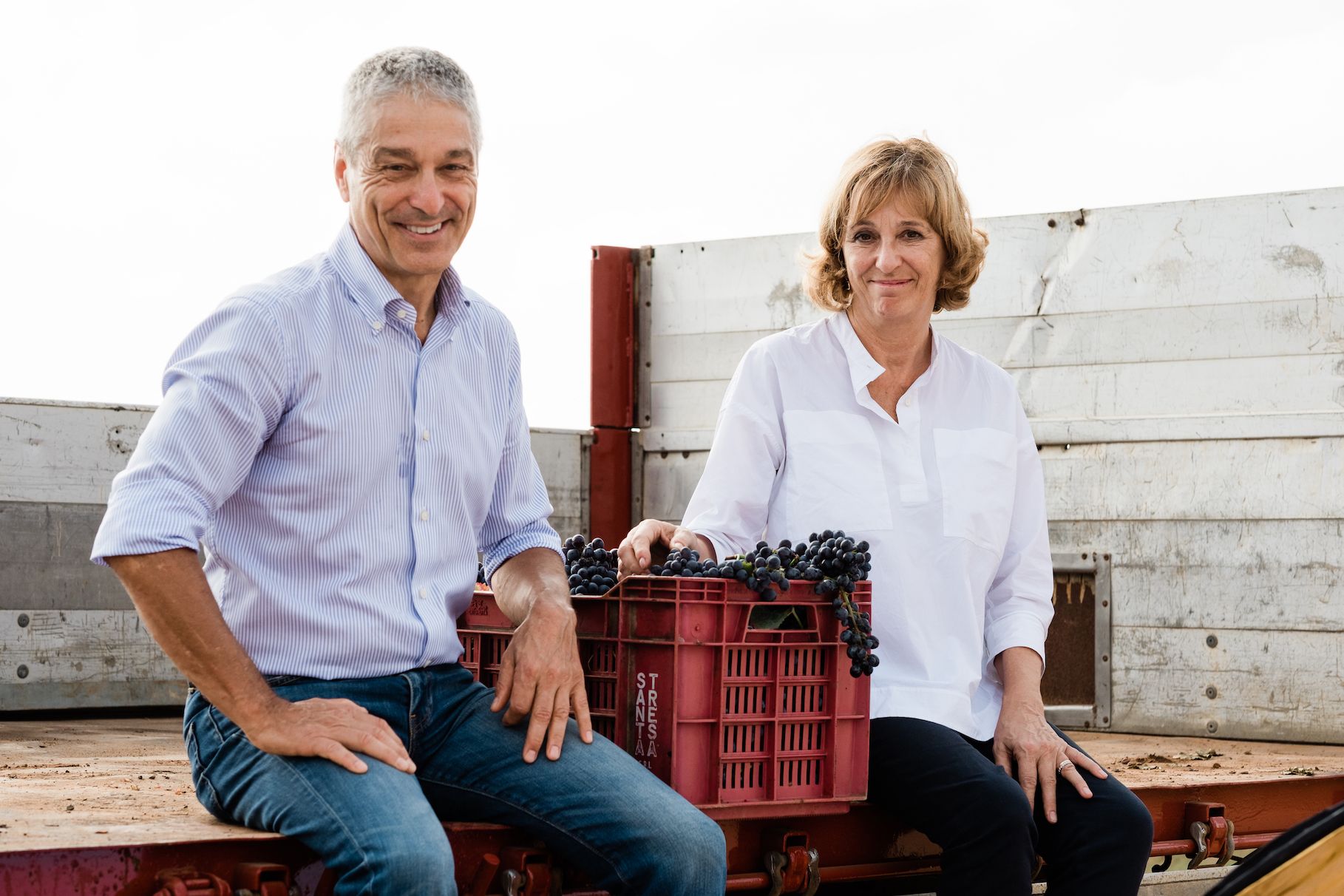“We want to bring back tradition and to come up with a wine that speaks about Sicily in a different way – it’s what the market wants, you need a wine with a point of difference, there’s no point in producing just another wine,” says Stefano Girelli
Last month six Sicilian grape varieties were added to the Italian National Register of Grape Varieties, ones that were believed to have died out years ago. As with many similar ampelographical discoveries, a single vine of each variety was found in a domestic garden or in desolate terrain – a high mountain slope, for example. One of the varieties was white, Recunu, while the other five were red: Inzolia Nera, Lucignola, Orisi, Usirioto and Vitatolo.
In each case, some of these vines were found where people had been making wine from them for centuries, and were on the verge of extinction.
Finding ancient grape varieties is part of a 15-year research project led by the Marsala branch of the University of Palermo that is currently studying over four thousand indigenous Italian grape varieties. The university is working with local winemakers such as Gemma Spano Bresina and Stefano Girelli, and is a sign that Sicily is actively investing in its own viticultural heritage – for historical and commercial reasons.
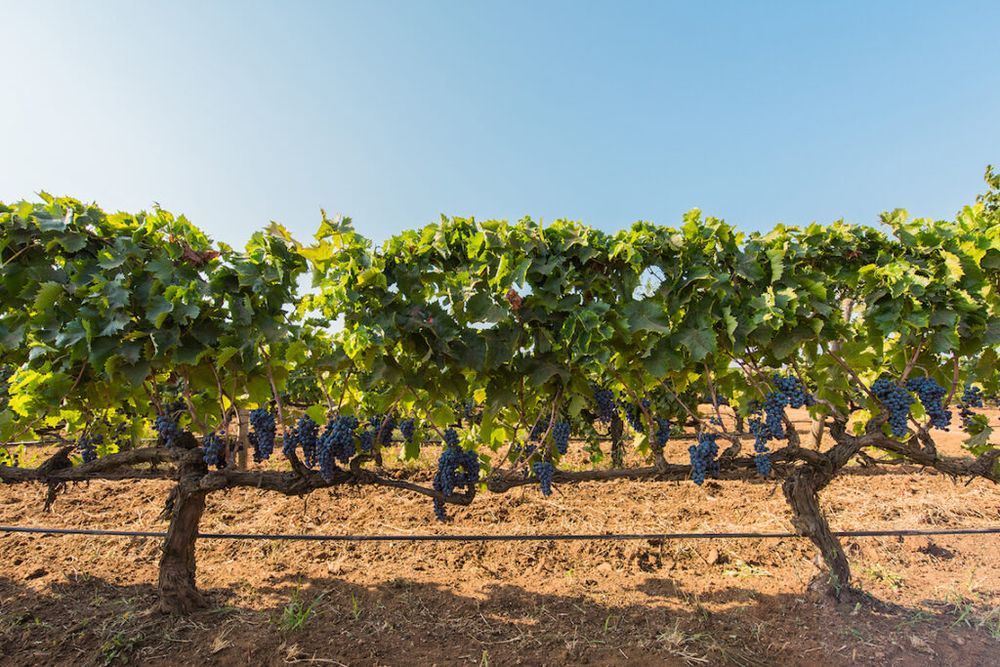
Old vine Nero D’Avola. “We have done a lot of work in the vineyard,” Stefano Girelli
Diversity is the name of the game
Girelli who runs two estates on Sicily, Santa Tresa and Cortese has already planted 8,000 vines of Orisi and has his own experimental vineyard in which there are a wide variety of indigenous vines.
“We have a vigneto sperimentale, run with the University of Masala where we have all grape varieties and clones, including varieties that have been lost over the centuries – Albanello, Orisi – and we are working on a programme to bring some of these back into production. In a few years time we will be tasting some of these wines together.”
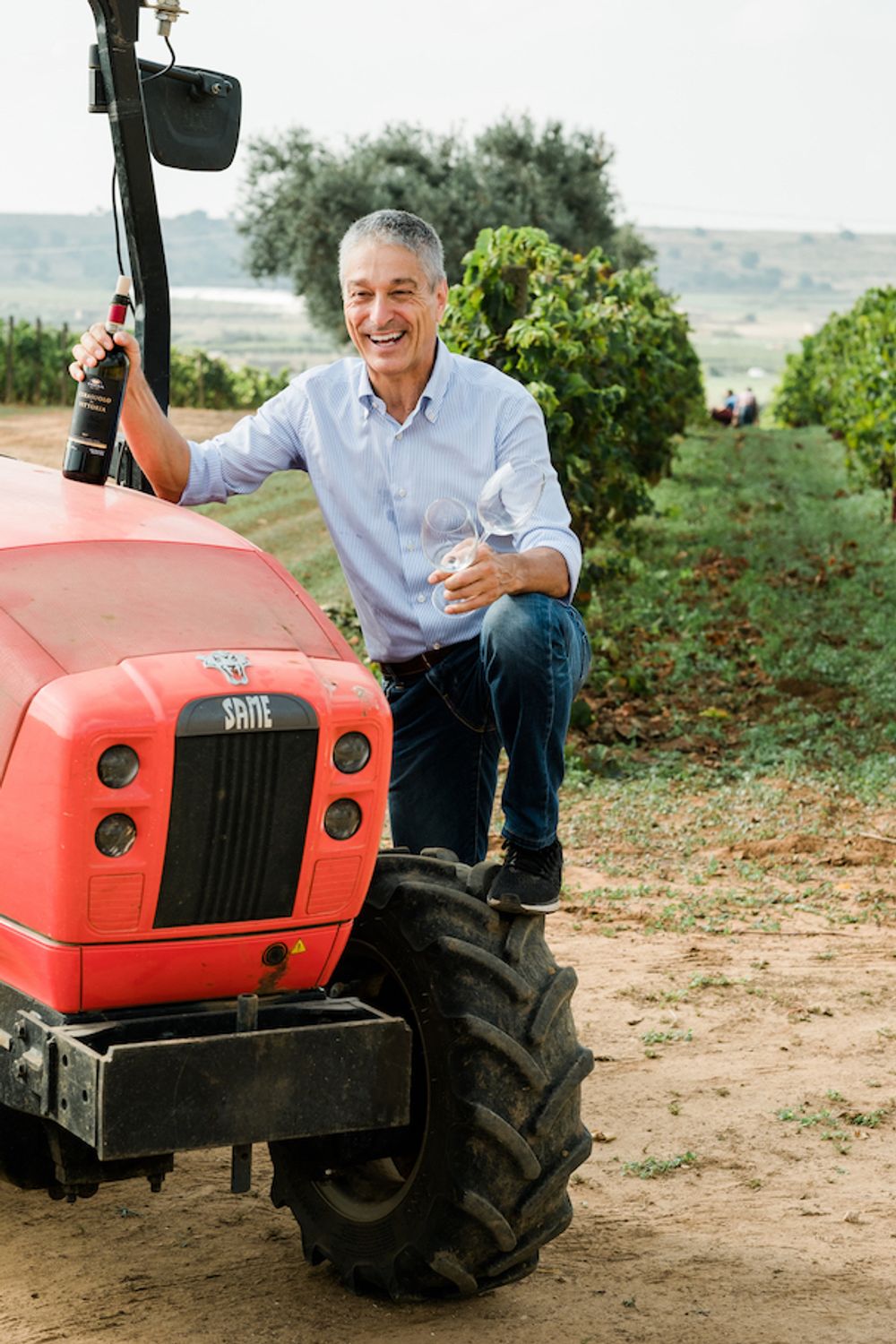
Stefano Girelli
“That’s what Sicily has – an enormous amount of diversity and not everyone knows this. 20 years ago, for example, only a few people knew about Nerello Mascalese but since then Sicily has brought these grape varieties back to life this is the future, diversity is the name of the future.”
It’s not just the island’s grape varieties that are diverse; Sicily is an island full of contrasts, perhaps more so than any other region in Italy, having been ‘ruled’ by everyone going from the Phoenicians through to the Cosa Nostra. Its climate is varied as are its altitudes and soils: volcanic soils in the east by Mount Etna, clay soils in the west, coastal vineyards with sandy soils and a high percentage of limestone. And it is this diverse terroir that can accommodate such a wide range of grape varieties, particularly indigenous.
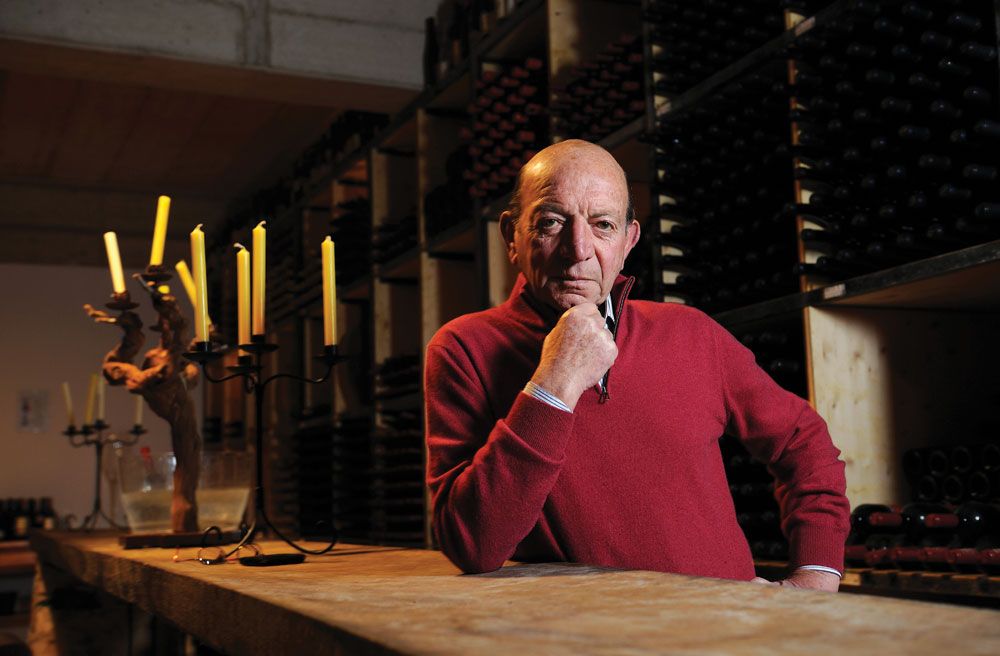
The influence of recently-deceased Diego Planeta in the rebirth of Sicilian wine cannot be underestimated.
Sicilian renaissance through local varieties
Sicily’s renaissance as a wine region has its roots in the 1950s and 60s when the region was only known for poor quality bulk wine. Wine cooperative Settesoli was formed to protect grape growers because the prices were alarmingly low and, under a 20 year tenure of Diego Planeta, from 1973, the co-op managed to improve the quality of its Mandra Rossa label and to incorporate modern winemaking techniques from abroad.
During this time there were also experimental vineyards set up between Settesoli and the Instituto Regionale della Vite e del Vino (IRVV) – controversially encouraging grape growers to plant international varieties, under the belief that to improve the quality of indigenous varieties, growers had to first get to understand how to do that with benchmark grapes.
Planeta’s influence on the renaissance of Sicilian varietals cannot be under-estimated. He co-formed Assovini Sicilia, to promote the island’s wines and between 1997 and 2013 built four boutique Planeta wineries dedicated to producing wines from indigenous varieties.
Today more than 85% of Sicily’s wines are made from native grapes – over 50 indigenous varieties – and new plantings such as Lucido (Catarratto) and Inzolia for whites and Frappato for reds outnumber plantings for international varieties.
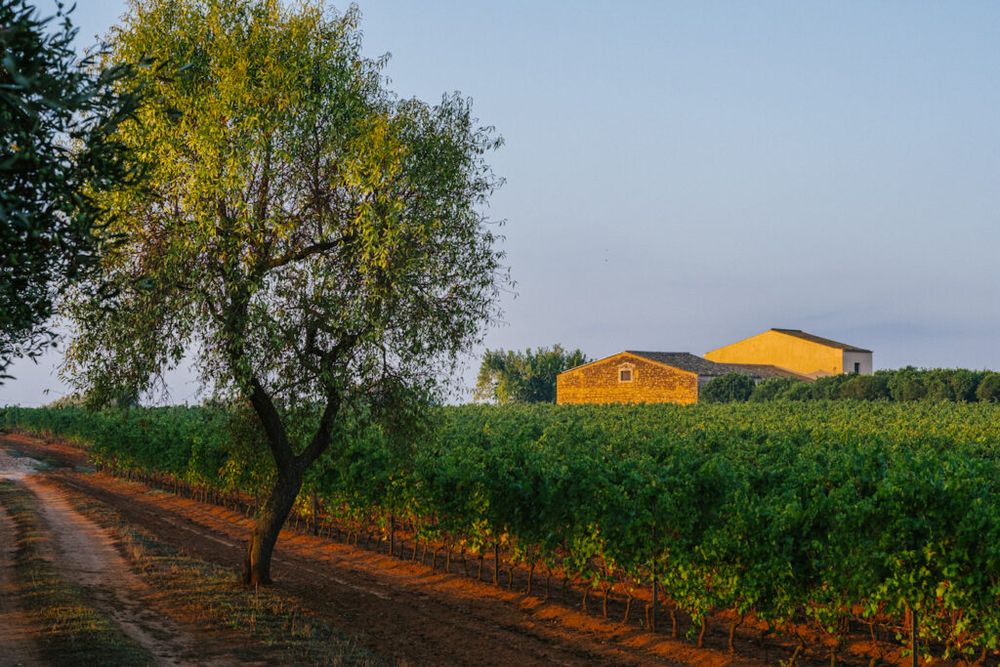
The negotiations for buying Cortese off a ‘formidable’ woman took place over many years involving lots of traditional haggling
Santa Tresa and Cortese: part of the ‘new wave’
Stefano Girelli is one of a number of North Italian-based entrepreneurs who have invested in Sicily because they have seen its potential and are doing so with total respect to the land and the grapes best suited to express that terroir. Apart from some Viognier in a blended white wine, all of the grapes used in making the six wines Girelli shows at the tasting are from indigenous varieties – Grillo, Catarratto, Fiano, Frapatto, Nero Mascalese and Nero d’Avola.
Since 2001 when he took over Santa Tresa, and then bought Cortese in 2016, Stefano and his sister Marina Girelli have invested in the vineyard first, saving unique clones of native grapes, renovating, re-trellising 14 hectares to Guyot, re-planting and so on.
“We want to bring back tradition and to come up with a wine that speaks about Sicily in a different way – it’s what the market wants, you need a wine with a point of difference, there’s no point in producing just another wine,” he explains whilst tasting his skin-contact Catarratto, Grillo and Fiano blend, “It is an older-style wine it says ‘This is what Sicily can produce’.”
“When I came to Sicily it was in a very poor state – but there has been renovation of the vineyards since then and in a lot of winemaking. Viticulture has developed so well here – the winemaking is transforming.”
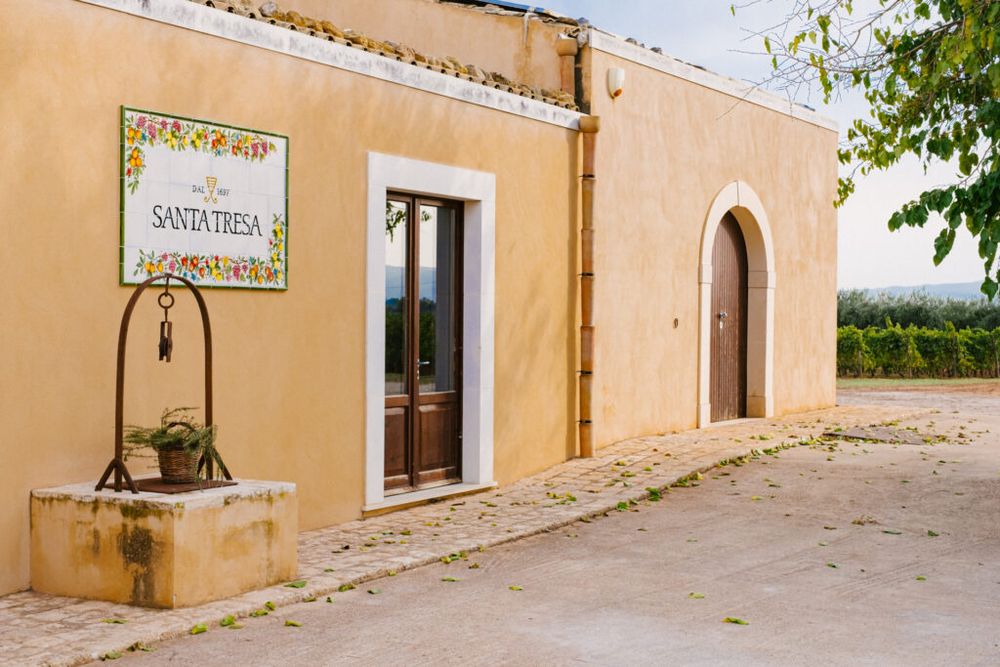
In order to achieve the style he is looking for in his wines – ripe tannins, softness and still-balanced acidity – Girelli’s philosophy is to be 100% organic (because the conditions are perfect for organic in Sicily) and spending a lot of time and thought in the vineyard.
“These things can only come from vineyard,” he explains, “and not through fixing, we do not ‘fix’ our wines in fact we really work in the winery as little as possible.”
“We have done a lot of work in viticulture and I mean a lot of work… pulling up 14 hectares of vines and re-training them in Guyot which is the perfect way to train vines in our estate… also doing the right pruning, since we arrived we have gone from green harvest to non-green harvest – I think green harvest is a bit of a failure – you ask the vine to produce that amount of fruit and then you cut it back, I think it all starts with the right pruning. Our production is not that high but it’s in balance.”
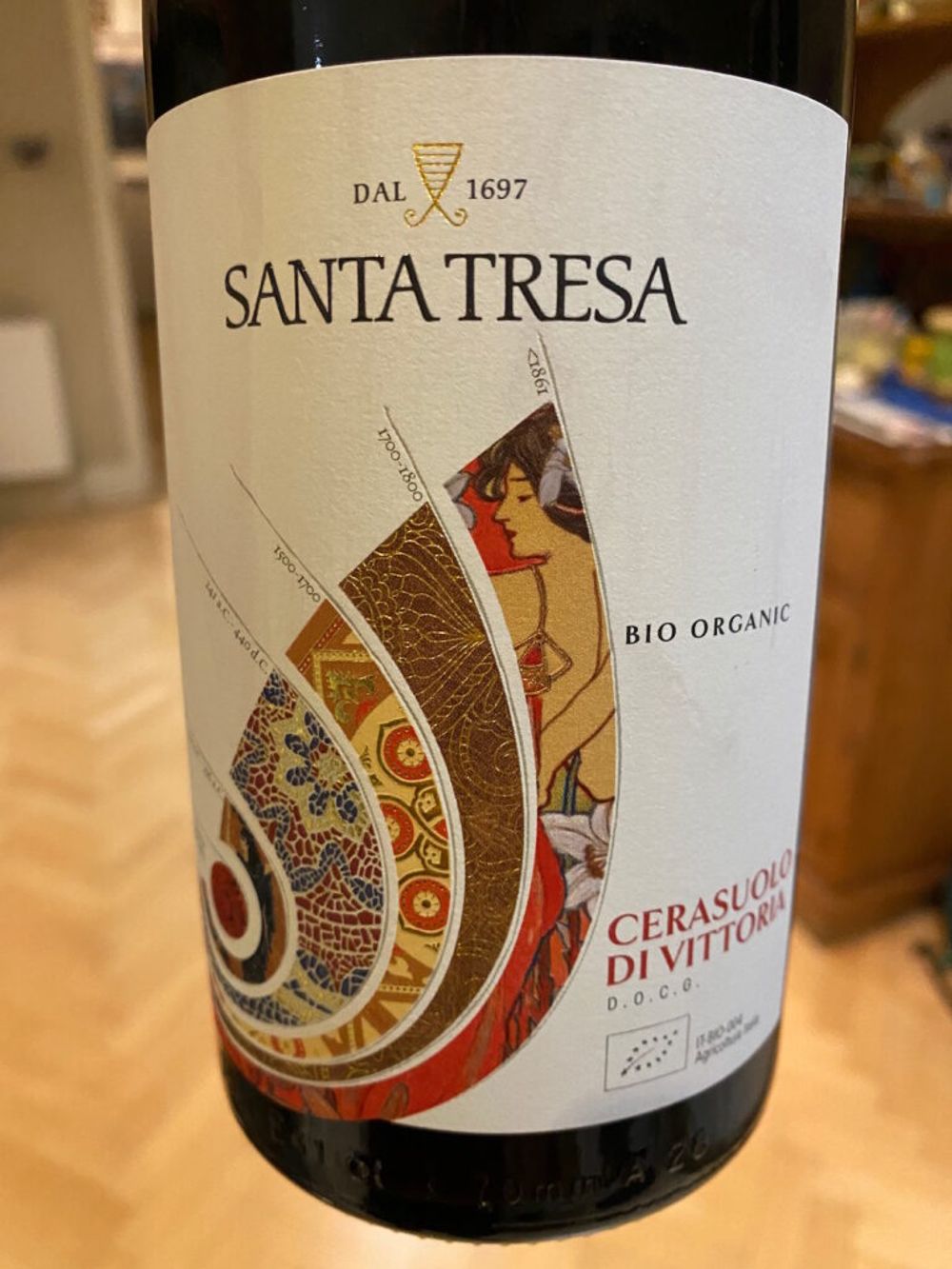
The Santa Tresa wines have had their labels designed to reflect Sicily’s different historical periods
With refreshing honesty he mentions mistakes he’s made (putting Grillo into barriques) but then there are many lessons he has learned: for example keeping white wines on lees for almost a year to allow them to mature; putting some in 30-90hl Slovenian barrels; not allowing any of the whites to go through malolactic fermentation to preserve freshness and acidity in order to counterbalance the structure and ripeness; only doing remontage on the reds at the earliest stages when the alcohol is low; and using 15% dried Nero d’Avola fruit in two of the blends to get riper, softer tannins that facilitate a broad attack on the palate.
Underneath all of the detail he gives when showing his wines the general watchwords are: keep things simple, natural, and local – both in the terroir and the grape varieties used to express it.
When Girelli describes his Cerasuolo di Vittoria DOCG, 2017, Cortese he says, “When you come to Sicily in August and it’s very hot and you have a thunderstorm and then you go outside after it has been raining and you get this smell of everything together and that’s what I get on this bouquet, it’s a combination of lots of different elements and I try to keep these personalities – to preserve what we get in the vineyard and not change it.”

Nero D’Avola fermenting in open top barrique in Cortese
And so to the wines of Santa Tresa and Cortese
This was my first tasting of Girelli’s wines and I have to admit to being very impressed. They have a purity to them, an authenticity, they are quite delicious and they are ridiculously good value. With the reds he’s going for softer, riper tannins and the wines are noteworthy for that – none of the blotting paper, dusty tannins you often get with so many Italian reds.
Rina Ianca 2019 Santa Tresa
This fresh, crisp white wine is a blend of 70% Grillo with Viognier with the wine kept on its fine lees for 10-11 months. It is light greeny gold to look at, has an attractive nose of yellow stone fruit and flowering herbs; is medium-weight on palate with yellow grapefruit zest and a mineral edge. It is aromatic but not too much and is remarkably complex given the £10.99 price point. It has had a classy label design change since the 2018 vintage and also gone from screw cap to cork.
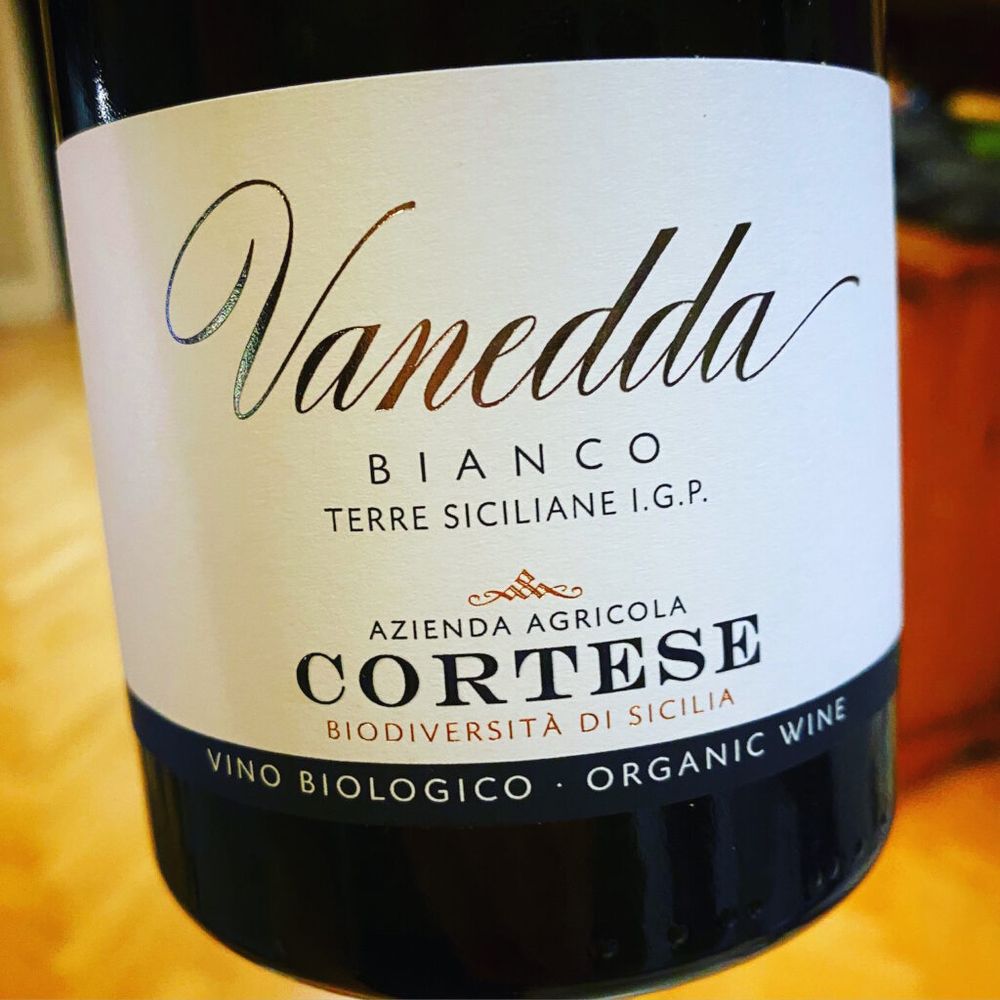
Vanedda, Bianco Terre Siciliane, 2018, Cortese
Girelli was influenced by ‘orange’ wines and traditional Sicilian field blends when making this eclectic blend of indigenous varieties – Catarratto, Grillo and Fiano – and this would make a good introduction to anyone new to orange wines. The fruit was fermented on its skins for two days and then racked to old, traditional 30/60 and 90 hectolitre Slovenian oak barrels where it’s left on fine lees for almost a year and then further matured in bottle for six months.
On the eye it’s light, shiny gold; the nose is complex and rich with honey, fresh nuts, coconut and orange skin; the palate is medium weight, with a broadness mid-palate and good balance between the structure of the wine and the tangible acidity and burst of lemon zest and orange flesh.
Different and immensely enjoyable as an aperitif or paired with vegetables, seafood or white meat. Would be great as part of a by-the-glass wine pairing menu.
Rina Russa, Frapatto, 2019 Santa Tresa
Although this fresh, fruit-driven wine looks like a rosé it is actually 100% Frapatto – the grape’s skin is very thin which means the resulting wine is a lighter colour. I’m a big fan of Clairet, which Rina Russa reminds me of, it is a beautiful ruby red colour, fresh and fruity on the nose, with hints of wild strawberries and watermelon; on the palate it is light, with bright acidity, soft tannins and immensely drinkable and, with 13% abv it doesn’t knock you for six. Worth noting that the wine still has a presence – it’s not cherryade.
Girelli says the secret to the success of this wine is getting the balance right between ripeness, acidity, tannins and alcohol – he picks it very late and uses a lot of remontage. By the taste of this he’s got it all about right – nice and versatile.
Nerello Mascalese 2019, Cortese
This grape variety is one that has been brought back into popularity over the past 20 years. It is similar to Frapatto in many ways but, because of its thicker skin, it has a deeper ruby red colour, and changes character more depending upon the soil it is grown in.
Cortese are going for a pure fruit style so no oak is used, and there is extended maceration after malolactic. The wine spends 15 days on its skins with more remontage used in the early stage of fermentation when the alcohol is low. The wine then rests on its fine lees for 10 months.
Deep ruby on the eye this has spicy red berries, bright acidity, good structure and excellent balance. Like the Frapatto this is a bit of a ‘quaffer’ but with a bit more elbow.
Cerasuolo di Vittoria DOCG, 2018, Santa Tresa
Cerasuolo di Vittoria is the only DOCG in Sicily, a wine type that got this status in 2005, Cerasuolo means ‘cherry red’ and this is the resulting colour after you blend 50-70% of Nero d’Avola with Frapatto – the latter bring floral aromas and a lighter body to the structure and tannins of the Nero d’Avola. Because Santa Tresa and Cortese are both in the commune of Vittoria, the tasting showed two very different examples.
Where the Nero d’Avola is picked when ripe, 15% of the fruit is left to shrivel on the vine. Locally this was used as a way of increasing the alcohol in the wine but Girelli does it to get riper softer tannins, which is a trait in all his red wines.
To taste: this wine is very dark ruby red; there are ripe, red berry fruit notes and some darker, more black raspberry and mulberry, with cooking spices and pepper. Great intensity here with beautiful, broad attack from the appassimento, fine balance, with a firm spine of acidity keeping the wine fresh and the purity of the fruit shining through.
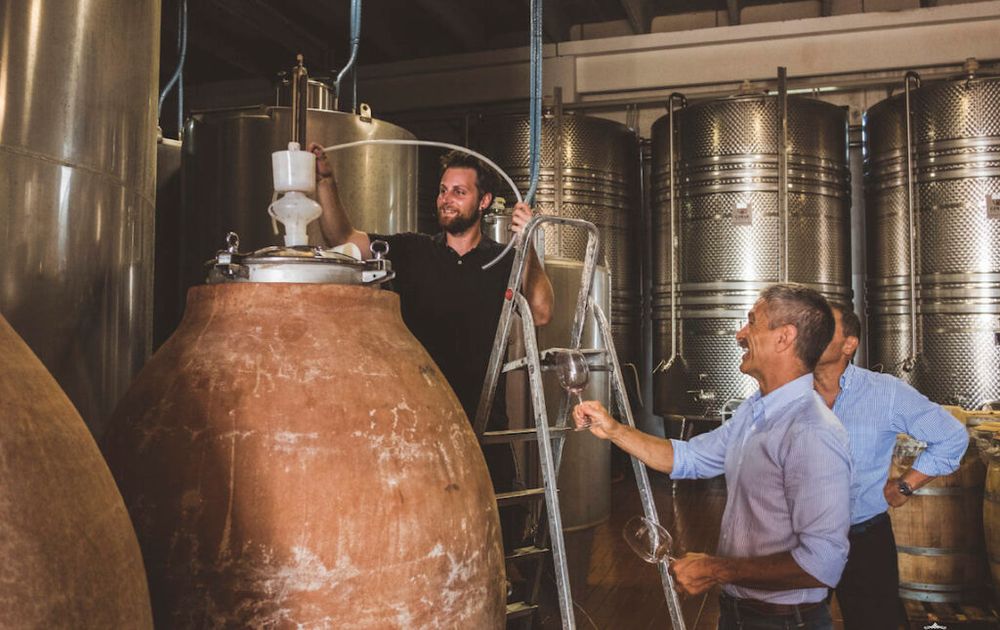
Having fun experimenting at Cortese
Cerasuolo di Vittoria DOCG, 2017, Cortese
Girelli confesses to having a lot of fun making this version and is clearly still in the experimental stage of its construction – the Frapatto is pressed very lightly, vinified in amphora, and left on the skins for one year. The Nero d’Avolla has open top barrique fermentation – the ‘old way’ – with no pumping over, it’s all done by hand, skins are intact, malolactic. Five vintages have been produced and each wine is very different. Having said that this works and is only £20 rrp.
This wine has an amazing nose (the one Girelli described earlier) with spice, leather, a slight cheesecloth/ wet clay note, a rustic tone; lots of wild black fruits, black cherry, balsamic; the palate is way more structured than the Santa Tresa – more complex and muscular. Very impressive way to end an impressive tasting.
